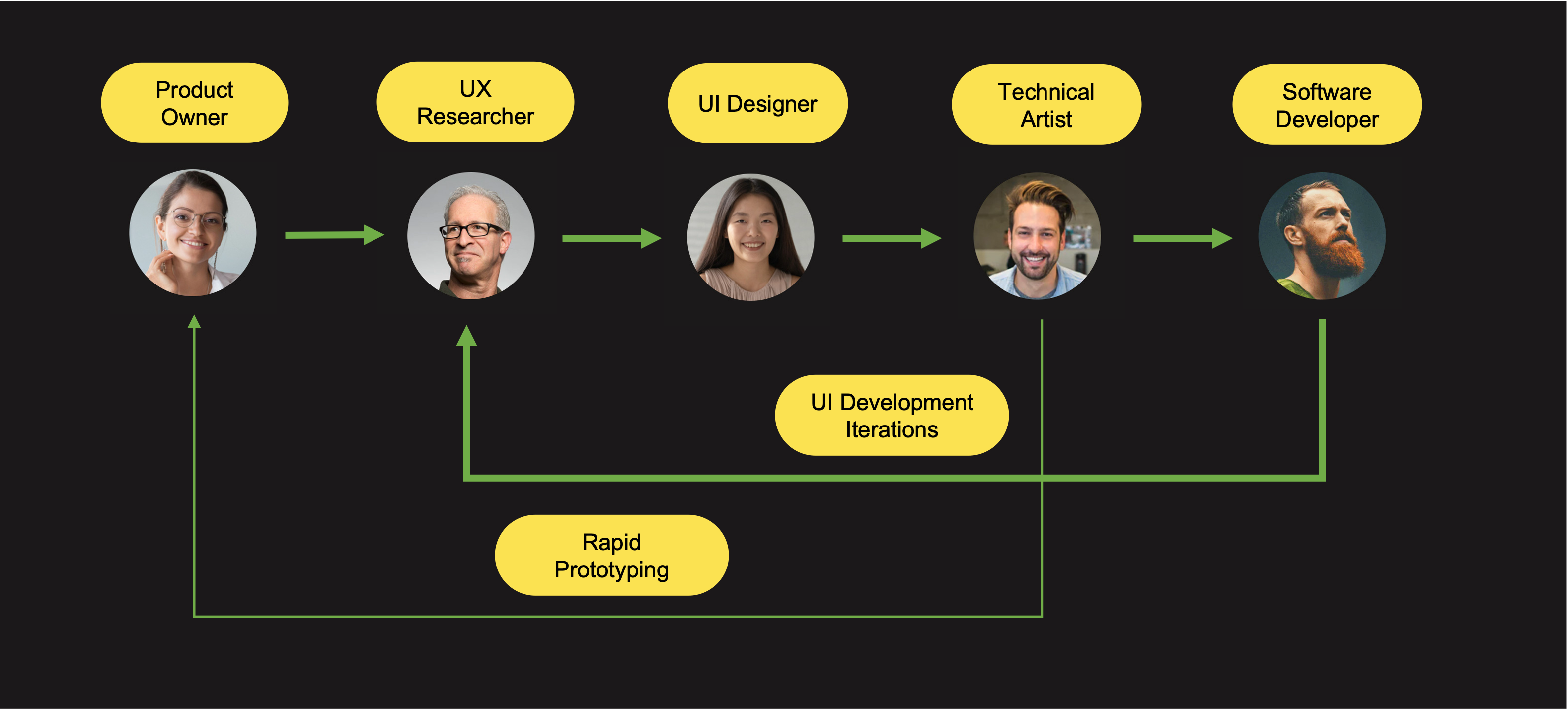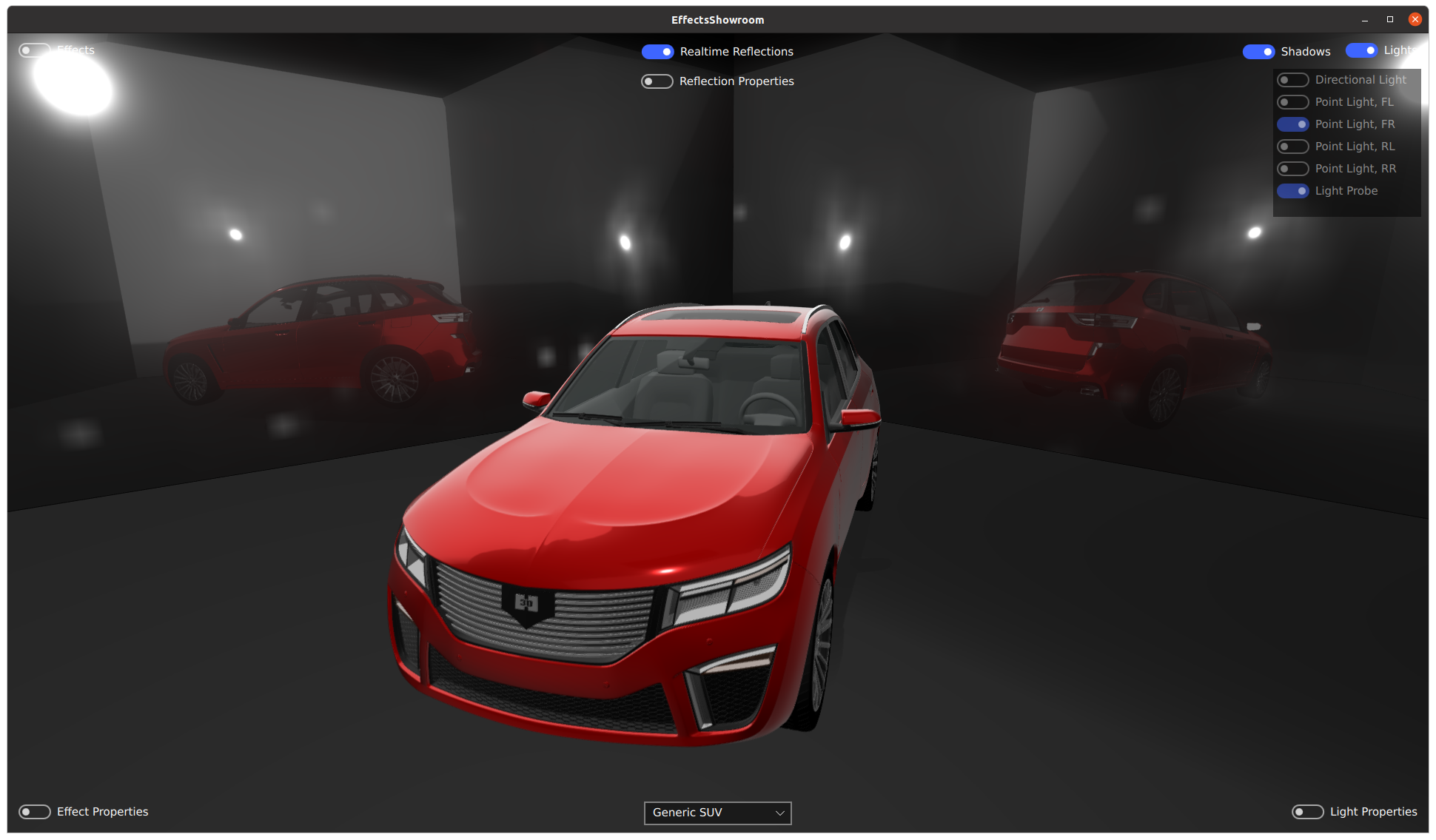Technical Artist – Job Description, Roles and Responsibilities for Embedded Device Development
February 22, 2022 by Peter Schneider | Comments
Are you considering hiring a Technical Artist and thinking about what to put into the job ad? I’ve been wondering the same recently. Here are my thoughts:
What does a Technical Artist do?
The Technical Artist implements and enhances 3D user experiences in Human Machine Interfaces (HMI), advanced games, and high-performance desktop applications. The role requires a strong understanding of real time rendering requirements, rendering pipelines, and rendering capabilities of different embedded systems.
To understand the role of the Technical Artist, we must first clarify the roles of the other roles in the product creation process. The Technical Artist is typically part of the R&D team consisting of software developers with different skills (application logic, database, interfaces, etc.) and Quality Assurance Engineers with their different expertise (Functional Testing, Performance Testing, Test Automation, etc.).
The Technical Artist is working very closely together with the design team, especially with UX and UI Designers. The design team may also have additional contributors such as UX Researchers, Visual Designers, Industrial Design, and Motion Designers. Not all companies have dedicated persons for all roles and certain responsibilities – including the role of a Technical Artist – may be combined to a single person, but the corresponding tasks need to be done one way or the other.
The Technical Artist in the Development Workflow
The Technical Artist has its place roughly in the middle of the product creation workflow. UX Researchers test the UI concepts with potential customers. UX Designers draft the UI with wireframes and interaction flows of the User Interface. UI Designers draw the visual appearance of the User Interface based on brand and product concept guidelines.

Image: Roles in the Product Creation Workflow
The Technical Artist’s job is to figure out how to make UI Designer’s vision happen on the target hardware. They need to implement the vision with the available UI implementation tools and the capabilities of the hardware in mind. The Technical Artist combines 2D and 3D UI assets from UI and Visual Designers to a functional User Interface. The Technical Artist optimizes lights, shadows, effects, and such through lightmaps, offline baked ambient occlusion and shadow maps, shaders and so on. They also might re-build materials for the 3D models fitting to the real-time rendering capabilities of the target hardware.

Image: Reflections of Car in a Virtual Showroom
Software Developers continue the work of the Technical Artist by adding the application logic, connectivity, interfaces, databases, and unit tests to the functional UI. The various Quality Assurance team members test the various functional and non-functional requirements of the product. The UX Researcher may test the usability of the product with focus groups from the first prototype to the final product.
The Job Requirements of a Technical Artist
The Technical Artists should have the following skills (besides the usual soft skills like being a team player and being a proactive learner of upcoming technologies):
- Strong understanding of real time rendering requirements, rendering pipelines, and rendering capabilities of different embedded systems
- Great understanding of visual effects (VFX) such as morphs, particles, shaders, materials, and textures
- Good Understanding of optimization techniques (mesh optimizations, image compression techniques, etc.)
- Ability to write post-processing effects such as depth blur, lens flare, tone mapping and bloom.
- Ability to build materials for the 3D models which are fitting for real time rendering
- Competence to optimize number of textures through texture atlases
- Experience in using Human Machine Interface (HMI) UI composition tools such Qt Design Studio
- Ability to import UI assets from design tools such as Figma, Maya, or Blender
In addition, depending on the use case and product being created, the following competencies might be beneficial:
- Comfortable with one programming language such as C++ to optimize the functional User Interface and collaborate effectively with the software developer
- Knowledge in off-line rendering technologies such as Vray, Renderman, Redshift, or Cycles
The Technical Artist is an up-and-coming job profile in many embedded device businesses. The emergence of 3D effects in consumer and industrial applications drive the demand for this new job. Large software development teams have or are in the progress of hiring Technical Artists. Smaller teams need to think how to ramp up the competencies in the area of real-time rendering and visual effects, if not with a dedicated person than at least by acquiring the necessary skills and tools for the team.
We at Qt employ several Technical Artists and are looking for more. But even more important, we at Qt is building a dedicated tool for Technical Artists which increases their effectiveness dramatically and smoothens the design-development handover. If you are interested to look not only for a Technical Artist but you are also wanting to know more about the Qt Design Studio, then don’t hesitate to contact us.
Blog Topics:
Comments
Subscribe to our newsletter
Subscribe Newsletter
Try Qt 6.10 Now!
Download the latest release here: www.qt.io/download.
Qt 6.10 is now available, with new features and improvements for application developers and device creators.
We're Hiring
Check out all our open positions here and follow us on Instagram to see what it's like to be #QtPeople.



